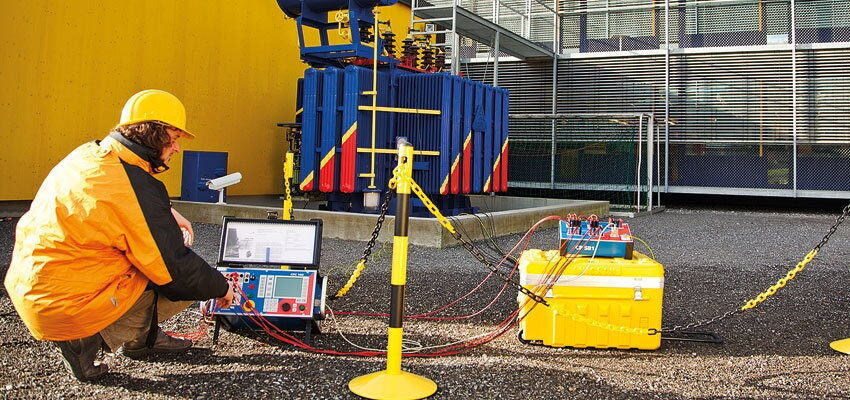
What Influence Does Residual Magnetism Have on the Transformer Core?
Introduction Power transformers are key elements in the electrical grid. If a power transformer fails, the financial impact of the outage time is in most...
byMarkus Pütter, Michael Rädler, Boris Unterer

Introduction
Power transformers are key elements in the electrical grid. If a power transformer fails, the financial impact of the outage time is in most cases considerably larger than the damage on the transformer itself. Due to the fact that the transformer fleets are getting older, the condition assessment and the appropriate maintenance strategy of power transformers is getting more and more important. To assess the condition of a transformer, various electrical measurement methods can be used. But a large number of diagnostic measurements are affected by residual magnetism. Therefore, it is difficult to analyse a reliable condition assessment of transformers. Residual magnetism can also have an impact on the inrush current. A too high inrush current can reduce the lifetime of a transformer due to the mechanical forces on the insulating paper. It is therefore recommended to demagnetise the transformer before performing diagnostic measurements and re-energising it.
Influence of residual magnetism on electrical routine and diagnostic measurements
The residual magnetism can be as high as 90% of the magnetic flux density (B) during operation. In the event of a fault or during routine tests, various electrical diagnostic techniques can be used for analysing the condition of a transformer. Residual magnetism influences certain diagnostic measurements in such a way that a reliable and meaningful analysis becomes difficult.
Particularly, when performing exciting current measurements, the magnetic balance test, or sweep frequency response analysis for localisation of faults in the core, residual magnetism may have such a negative effect that results become unintelligible.

Figure 1: Residual Flux BR and hysteresis loop at different Flux densities
Influence on sweep frequency response analysis measurements (SFRA)
The Sweep Frequency Response Analysis (SFRA or FRA) uses frequency response analyses to describe the dynamic characteristics of an oscillating network, which is a transformer in our case, based on its input and output signals. The SFRA measurement method is described in the IEC 60076-18 and IEEE C57.149-2012 and has become increasingly accepted as a diagnostic method.
A transformer reflects an oscillating system consisting of various series and parallel resonances with corresponding inductances (L), capacitances (C) and resistances (R). When one parameter is changed, for example the main inductance due to a core problem or the geometric shift of a winding, one or more characteristic resonance points are also displaced or shifted. Every electrical network has a unique frequency response, its so-called fingerprint. Interpretation of an SFRA measurement is based on a comparison of measurements, for example with the initial fingerprint or with other transformers of the same type. The plot of a fingerprint should not change throughout the entire life cycle of a transformer. All influences which could affect SFRA measurements must therefore be avoided, as they could lead to misinterpretation of the obtained test results.
Since residual magnetism influences the frequency response particularly at lower frequencies, where the magnetisation inductance dominates the response, it is vital to ensure that the transformer has been demagnetised before performing the measurement. Meanwhile, because of this pronounced and well understood influence at the lower frequencies, an SFRA measurement is effective in verifying residual magnetism.
The SFRA measurement reflects the main inductance through the first resonance points. Fig. 3 shows those typical resonance points of a three-limb transformer’s main inductance. Two significant parallel and series resonance points can clearly be seen on the outer windings. This can be described to the two magnetic paths with different lengths. In comparison with this, the winding on the middle limb displays only one characteristic single resonance point.

Figure 2: SFRA connection diagram for NV-wiring







